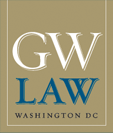Document Type
Article
Publication Date
2014
Status
Accepted
Abstract
Litigation finance companies have some incentives to screen plaintiffs applying for financing based on the strength of their claims, but a company may still have incentives to provide financing when the probability that a plaintiff would prevail at litigation is low. The result is that litigation finance may facilitate both meritorious and nonmeritorious claims. This Article argues that fee limitation rules for
litigation finance companies can improve their incentives to select only relatively high probability cases, thus enhancing the normative case for states to enact legal reforms allowing litigation finance. A simple version of the rule, which will work if a case is sure to go to trial, allows a successful plaintiff to return no more than the amount borrowed and then the same amount again, plus ordinary interest. This rule will encourage finance companies to lend only where a plaintiff’s probability of winning is expected to be greater than 50%, although the rule can be altered to target lower probability thresholds. The Article also describes alterations to the rule to accommodate the possibility of settlement, cases in which damages are disputed, where injunctive relief is at issue, where financing is provided in installments, and where only a portion of the plaintiff’s expenses are paid by litigation finance companies. Should fee limitation rules become established in the fee limitation context, they also might be extended as a vehicle of tort reform. A requirement that plaintiffs and defendants fund some portion of their litigation costs through litigation finance can reduce frivolous suits and frivolous defenses of meritorious suits and may have advantages over other mechanisms, such as fee-shifting rules.
GW Paper Series
GWU Law School Public Law Research Paper No. 2019-18; GWU Legal Studies Research Paper No. 2019-18
SSRN Link
https://ssrn.com/abstract=3366637
Recommended Citation
Abramowicz, Michael B., Litigation Finance and the Problem of Frivolous Litigation (2014). Litigation Finance and the Problem of Frivolous Litigation, 63 DePaul L. Rev. 195 (2014) (symposium contribution). ; GWU Law School Public Law Research Paper No. 2019-18; GWU Legal Studies Research Paper No. 2019-18. Available at SSRN: https://ssrn.com/abstract=3366637
